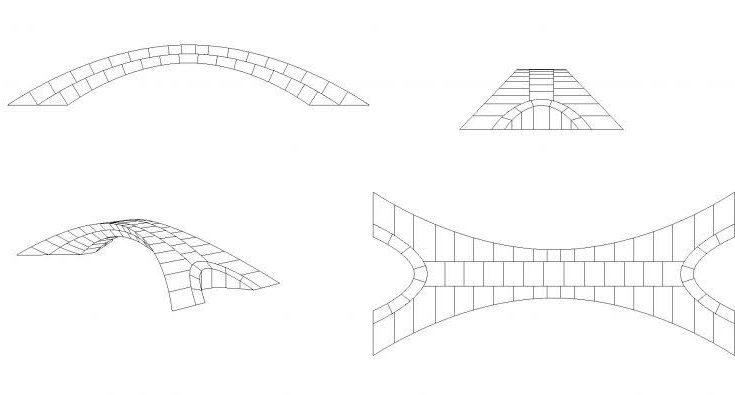In 1502, Leonardo da Vinci sketched out a plan for what might have been the world’s longest bridge at the time – 280 meters (918.6 feet). Despite the fact that the bridge itself was rarely fabricated, engineers at the Massachusetts Institute of Technology have tried the design to check whether it would work.
The aftereffects of their work were exhibited a week ago at the International Association for Shell and Spatial Structures gathering in Barcelona, Spain, as indicated by a release by the university.
Da Vinci presented his inventive bridge sketch when Sultan Bayezid II, leader of the Ottoman Empire from 1481 to 1512, put out a solicitation for bridge designs that could length over the Golden Horn. This characteristic waterway estuary isolated the urban communities of Galata and Istanbul.
Da Vinci’s proposition was not chosen. Presently, a link stayed scaffold is set up. In any case, what might it have been similar to if da Vinci’s plan had been developed?
MIT engineers considered his drawing, just as the materials he would have had accessible, and development conditions at the time. They constructed a scale model to test its strength and how it may respond to various conditions.
At the hour of his idea, the bridge would have been a novel design contrasted with prominent half circle curves. These curves required docks put along the bridge’s range to help its length. In any case, da Vinci proposed a straightened curve, as yet arriving at a tallness with the goal that boats could go underneath it, however utilizing one immense curve to help individuals cross from Istanbul to Galata.
“It’s incredibly ambitious,” said Karly Bast, an ongoing MIT graduate student. “It was about 10 times longer than typical bridges of that time.”
“But it was also quite sophisticated geometrically, with much more curvature and three-dimensionality than typical arch bridges,” said John Ochsendorf, MIT educator of architecture and civil and environmental engineering.
So as to balance out the scaffold against horizontal influence and seismic tremors, da Vinci needed the bridge’s steady projections on either end of the curve to spread outward. He realized the region may encounter quakes, as it had previously.
At the time, stone would have been the essential material used to assemble a scaffold of such length since wood or block would not have been reasonable. The analysts didn’t discover any subtleties by da Vinci for the development of the scaffold, however accept the stones would have been fitted together without mortar.
Their model included 126 3D-printed squares fitted together for a 32-inch long extension. At the point when an bridge was developed in this Roman style, scaffolding was utilized to keep the stones set up. When the last cornerstone was set up, the scaffolding could be evacuated. The scientists did likewise with their model.
“When we put it in, we had to squeeze it in,” Bast said. “That was the critical moment when we first put the bridge together. I had a lot of doubts. When I put the keystone in, I thought, ‘This is going to work.’ And after that, we took the scaffolding out, and it stood up. It’s the power of geometry. This is a strong concept. It was well thought out.”
Past endeavors to make the bridge -, for example, a passerby connect in Norway – utilized present day materials.
Ochsendorf said if the extension were developed today, it would almost certainly be made with steel or cement. Be that as it may, the scientists needed to know whether da Vinci’s design would have been suitable at the hour of its creation.
The designers additionally tried the bridge’s steadiness by reproducing what may have occurred if the dirt was debilitated by seismic tremors. The scaffold withstood the reenactments.
Could the bridge be utilized today? Bast said lighter, more grounded designs for bridges, in view of accessible materials, would win out. Be that as it may, it features the splendor of da Vinci’s design.
“What we can learn from Leonardo da Vinci’s design is that the form of a structure is very important for its stability,” Bast said. “Not only is Leonardo’s design structurally stable, but the structure is the architecture. It is important to understand this design because it is an example of how engineering and art are not independent from each other.”
Ochsendorf said the group needed to know whether da Vinci’s thought “could actually have stood up.”
“It would not have been easy to build, in the 16th century or today, but we have now proven that his ideas on bridge design were well ahead of his time,” he said. “It is unlikely that it will ever be built for reasons of cost and practicality, but it could inspire future designers to dream big.”
Disclaimer: The views, suggestions, and opinions expressed here are the sole responsibility of the experts. No Just Examiner journalist was involved in the writing and production of this article.




